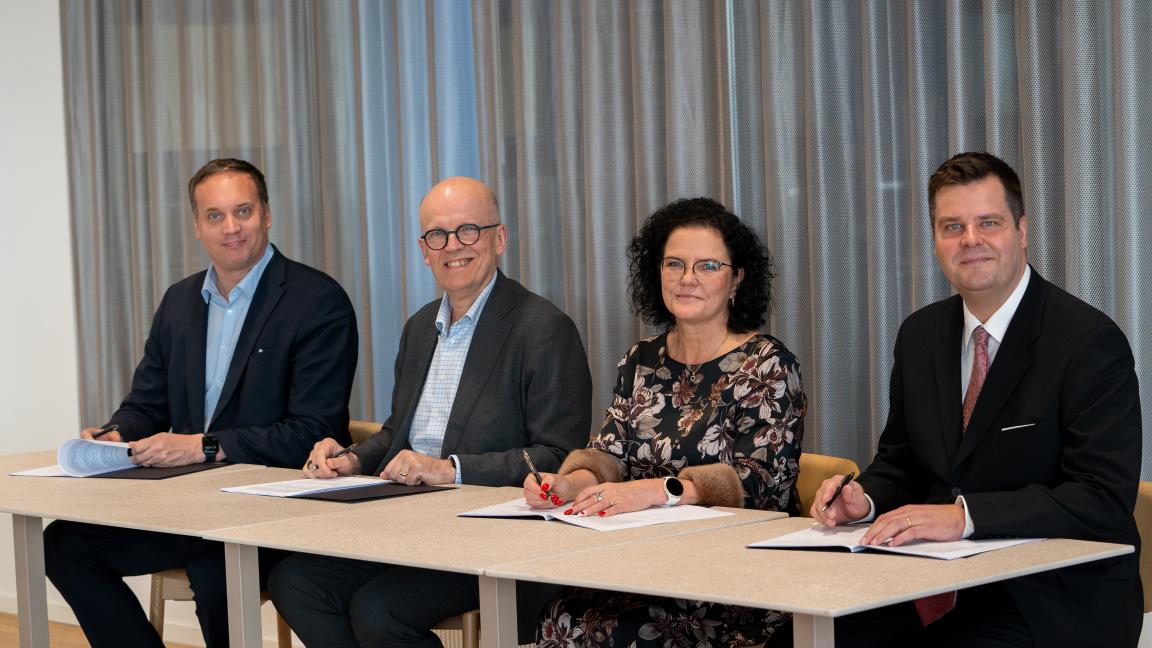The University of Vaasa, the University of Oulu, VTT, and Wärtsilä are building an energy laboratory for the development of future engines
The goal of the energy laboratory is to serve as a center of excellence in combustion and engine technology. The laboratory will strengthen the RDI activities of companies in the region through major new research infrastructure and develop the export potential of the region for the benefit of all of Finland. This unique collaboration between the public and private sectors is coordinated by the University of Vaasa.
“The new energy laboratory not only promotes technological development but also strengthens our commitment to sustainable energy and the future. Together with our partners, we can create innovative solutions that benefit both industry and society at large. Such shared infrastructures between universities and companies are particularly important as they advance businesses, society, and science,” says Minna Martikainen, Rector of the University of Vaasa.
“The energy laboratory enables major research breakthroughs in the study of the future energy transition. It also promotes research collaboration in the field of energy technology and allows for the implementation of research projects and assignments for third parties. Therefore, the energy laboratory is not only available to the partners who have signed the agreement, but its operations emphasise openness and an ecosystem approach. Impact arises from collaboration,” explains Mika Grundström, Vice-Rector for Research at the University of Vaasa.
The new laboratory houses Wärtsilä’s single-cylinder engine W20, and in addition, the University of Vaasa’s research infrastructure includes engine type W4L20, high-speed engines, and a fuel laboratory. The energy laboratory also enables the use of future fuels, such as hydrogen.
Professor Juho Könnö from the University of Oulu tells that the speed of product development is becoming increasingly significant in promoting the green transition.
“The energy laboratory enables the testing of new technologies on an industrial scale and supports the shift to model-based product development by providing a unique experimental environment to ensure the functionality and accuracy of simulation models. This way, products that meet customer requirements can be developed much faster than before,” says Könnö.
According to Petri Söderena, Vice President of VTT’s Mobility and Transport Research Area, the research on sustainable energy forms for maritime transport and motor power plants is a key part of the green transition.
“The new energy laboratory will significantly develop current solutions into more energy-efficient and near-zero-emission combustion technologies. The energy laboratory creates a completely new opportunity for research in the field by bringing together private and public research entities. This way, we can jointly promote the emergence of new innovations in Finland,” tells Söderena.
Hannu Mäntymaa, Managing Director of Wärtsilä Finland, describes that the energy laboratory is a shared research platform and a pioneering collaboration model that reduces the investment needs of individual actors in research and development infrastructure.
“The laboratory allows for collaborative basic research in combustion engine technology, particularly to promote the green transition in both maritime transport and power generation. We believe that this will play a central role in Finland’s combustion engine research as we move towards renewable energy sources,” says Mäntymaa.
In the photo (left): Hannu Mäntymaa, Managing Director of Wärtsilä Finland, Antti Vasara, President & CEO of VTT, Minna Martikainen, Rector of the University of Vaasa, and Professor Antti Niemi, Dean of the Faculty of Technology, University of Oulu.
